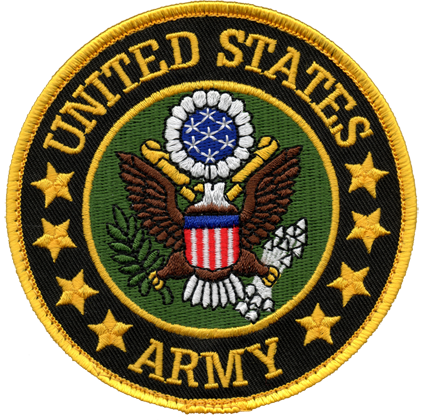How to Tell What US Army Patches Mean | USAMM
Aug 25, 2020 04:12
As a United States Army soldier, it is mandatory that the way you are dressed and your outward appearance are always maintained to high standards. The U.S. Army Regulation 670-1 states that being well-groomed builds pride. This goes hand-and-hand with the desired image of law and order, as well as being organized and disciplined.
U.S. Army uniforms must fit properly, remain clean, and be ironed and pressed neatly. The same demands are placed on the placement of all U.S. Army patches. But what exactly do these US Army patches that soldiers are decorated with mean?

Rank Patch
Soldiers in the US Army are organized by their ranks, such as Private First Class, Specialist, Corporal, and Sergeant. Their various tiers of service are displayed on the left sleeve of their uniform with their appropriate rank patch.
Branch Insignia
The U.S. Armed Forces consist of six different military branches: Navy, Marine Corps, Air Force, Army, Coast Guard, and Space Force. For members of the U.S. Army, a branch insignia patch marked "U.S. ARMY" is positioned above the left breast pocket.
Soldier's Name
At the top edge of the right breast pocket of all uniform coats and shirts is where you will find a U.S. Army patch with the soldier's last name.
U.S. Flag
A U.S. Army patch with an image of the U.S. flag in reverse is worn on the soldier's left shoulder, differentiating the soldier from allied forces and opposing enemy forces. The flag is shown in reverse with the field of stars towards the front of the soldier's uniform so that to the passive observer, the flag will look like it is flying in the wind on a pole that is lifted up by the soldier.
Unit Patch
It is a requirement by the U.S. Army that a soldier wears a patch representing her or his current unit assignment. This patch has to be worn on the left shoulder of the soldier's uniform. The soldier's current unit assignment must be reflected by a patch worn on the front of their beret. A soldier with prior combat service may also wear a patch representing that unit on their left shoulder if they so choose.
Tabs
Right above the unit patch on the left shoulder is where a special patch is placed to reflect those that have earned the status of Ranger, Special Forces, or Airborne qualification.
Colored
Shoulder sleeve insignias were originally designed with bright colors, but wisely these bright designs were phased out because they put soldiers at risk of standing out during combat, unable to blend in with the earth tone brown and green colors of their outdoor surroundings.
The full-color shoulder sleeve insignia was discontinued in 2015 with the retirement of the Army Green Uniform. For combat uniforms, "subdued" versions have been developed for use on the battlefield. After several years of retirement, the full-color shoulder sleeve insignias made a comeback with the "pinks and greens" uniform re-introduced in the tail-end of the 2010s.
Subdued
The subdued version of the shoulder sleeve insignia was created for the Battle Dress Uniform (BDU) and has patches that are mostly depicted in olive green, dark brown and black, to match the BDU. For the most part, this BDU U.S. Army patch variation is obsolete. The reason for this outcome is that the United States Army phased out the BDU altogether during the late 2000s as they made room for the Army Combat Uniform (ACU).
The Desert Camouflage Uniform (DCU) has a subdued look that is predominately brown and tan to integrate with the design of the uniform. But much like the Battle Dress Uniform, the Desert Camouflage Uniform has been phased out by the U.S. Army, and they use the Army Combat Uniform.
The subdued version created for the Army Combat Uniform (ACU) is the most commonly used, and it has its own shoulder sleeve insignia that are primarily foliage green, light brown, and black. Some of these ACU Army patches feature maroon and red details.
The ACU shoulder sleeve insignia differs from past patches in that they are backed with velcro to be able to attach them to velcro pockets on the uniform’s shoulder instead of being sewn on.
Operational Camouflage Pattern
Operational Camouflage Pattern (OCP) uniforms have been developed that are also called ‘MultiCam’ because they are inspired by the Crye Precision's proprietary pattern. New shoulder sleeve insignia have been created that have replaced the green foliage color of the ACU shoulder sleeve insignia with "Bagby" green.
The shoulder sleeve insignia of the Operational Camouflage Pattern (OCP) also have velcro backing to affix them to the uniform.
Now that you have a better idea of how to tell what U.S. Army patches mean, you can confidently congratulate soldiers by rank and even gain some respect from them for knowing what their earned patches mean.







































































